We all know about Tokyo’s amazing sushi, ramen and tempura.
Japan’s capital is a gastronomic wonderland – that comes as no surprise.
But if you want to really experience Japan’s rich culinary canon, you’ll need to get out of Tokyo and eat your way across the country.
“Japan has one of the richest and most diverse ranges of food found anywhere in the world,” Paul Christie, the CEO of Walk Japan food and culture tours, tells CNN Travel.
“Regional identity has been very strong throughout Japanese history and is still proudly promoted. Together with a climate that varies enormously amongst its regions, this has resulted in a strongly localized cuisine with a profusion of different dishes.”
But the biggest driver of high-quality food? Small-scale farming, centuries-old traditions and local restaurants.
“By far, the majority of restaurants are family-run establishments, where pride in culinary abilities and customer’s satisfaction are top priorities,” explains Christie, who has lived and worked in Japan for the past 30 years.
“These restaurants are the backbone of Japan’s culinary culture and there are tens of thousands of these throughout the nation.”
So where’s a food obsessive to go for an epicurean adventure through Japan? Here, Christie points travelers to a few of his favorite foodie destinations.
Kunisaki and Beppu, Kyushu Island
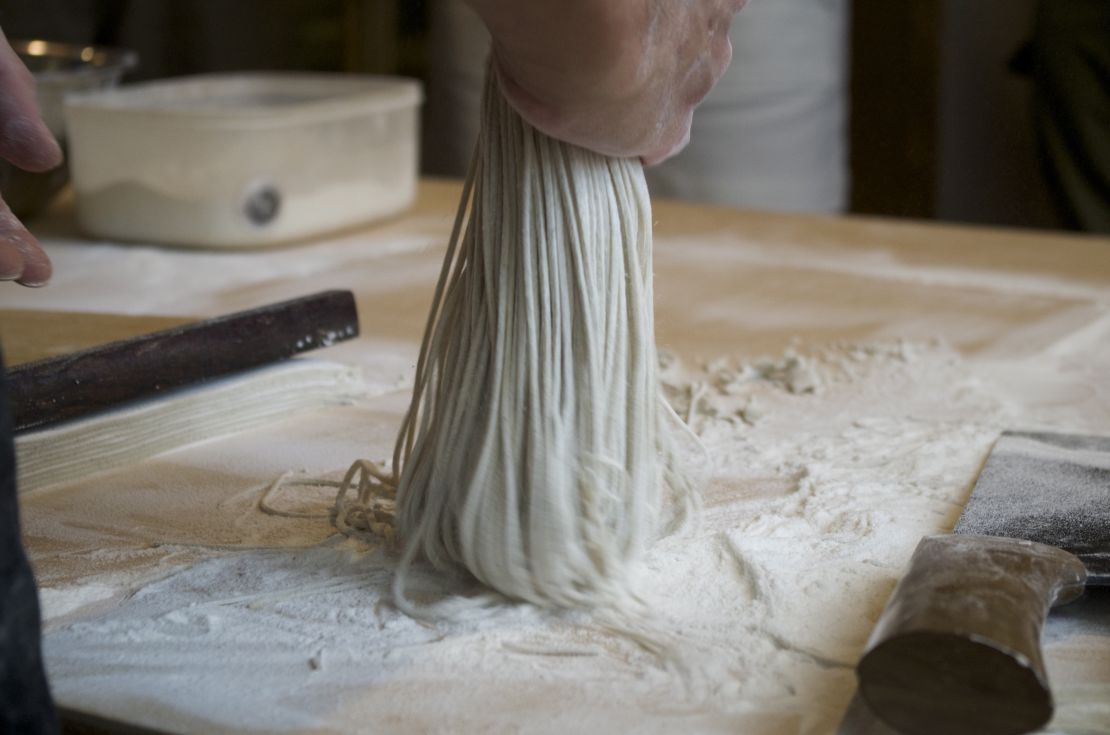
Located on the eastern edge of Kyushu island, small coastal towns such as Kunisaki and Beppu are famous for their quaint streets and onsen (hot springs) – sometimes used to steam noodles, seafood and vegetables.
“In Oita (region), dango-jiru is a simple yet filling dish of kneaded, thick wheat noodles cooked with sliced shiitake mushrooms, onions and carrots in a miso soup,” says Christie. “This dish’s counterpart is yaseuma – the same noodles as used in dango-jiru but covered in sweetened kinako flour – finely grounded roasted soybeans.”
Said to be a local favorite since the Heian Period (794-1185), yaseuma is best enjoyed as a simple snack or desserts, ideally paired with coffee or green tea.
For homemade noodles, Christie recommends Kaya-no-ki, located opposite beautiful Fuki-ji Temple on the Kunisaki Peninsula. Here, you’ll find lovingly crafted noodles, mixed with fresh ingredients sourced from local farmers.
In nearby Beppu, heading south along the coastline, Christie recommends onmen – a warm soba noodle dish that usually comes in a choice of size, from small to extra-large.
“The noodles, which are made from soba buckwheat flour, have an al dente texture and are served in a clear broth topped with slices of well-seasoned beef, half a boiled egg, kimchi, Korean-style sour and spicy cabbage, and sesame seed,” says Christie.
“You can find this local dish in a number of specialist restaurants in Beppu, including Kirin-tei, where the noodles are made right in front of you.”
Situated along Beppu Bay, Kirin-tei opened in 1974 and has established a reputation for its fresh noodles and enormous portion sizes.
Kaya-no-ki, 2421-2 Bungotakada-shi, Oita Prefecture, Japan; +81 978 26 2351
Kirin-tei, 10-45 Mochigahamacho, Beppu, Oita Prefecture, Japan; +81 977 21 0774
Hiroshima, Honshu Island
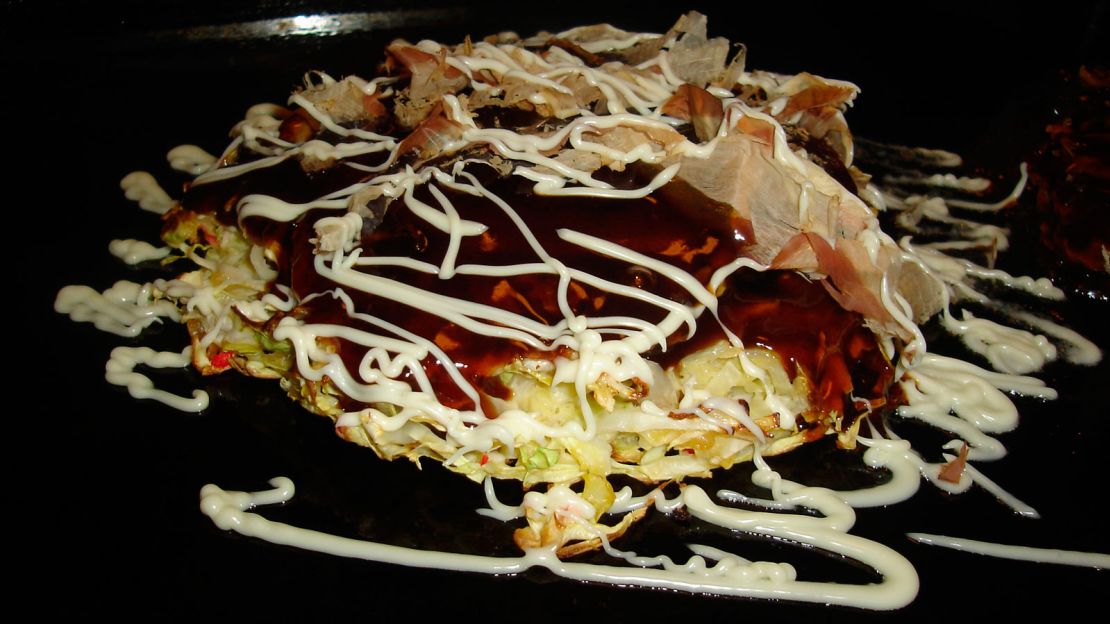
On the southwestern edge of Honshu Island – the largest island in Japan – the city of Hiroshima may be modernizing, but it hasn’t lost touch with local culinary traditions.
“The soul food in Hiroshima is without a doubt okonomiyaki savory pancakes,” says Christie.
“Each restaurant creates its own style, but the essential ingredients include batter and shredded cabbage, along with toppings like pork, prawns, white cabbage, dried bonita flakes and Worcester sauce.”
Derived from the phrase “how you like,” the dish is usually highly customizable when it comes to the filling and toppings.
Most okonomiyaki outfits revolve around a large iron griddle, where the chef crafts the cabbage-based pancakes in front of you.
To taste this local dish in all its glory, Christie points to Micchan Sohonten.
“This is where the dish originated in 1951,” says Christie. “Since then, okonomiyaki has found popularity throughout Japan, spawning many okonomiyaki restaurants.”
After getting your pancake fix, Christie suggests exploring the neighboring Seto Inland Sea, where you’ll find numerous oyster hatcheries.
“Not surprisingly, oysters – particularly grilled – are another staple food in this area,” adds Christie.
Micchan Sohonten, 1-2 Matsubaracho, Mashiminami-ku, Hiroshima 732-8791, Hiroshima Prefecture, Japan; +81 82 263 2217
Izu Peninsula, Honshu Island
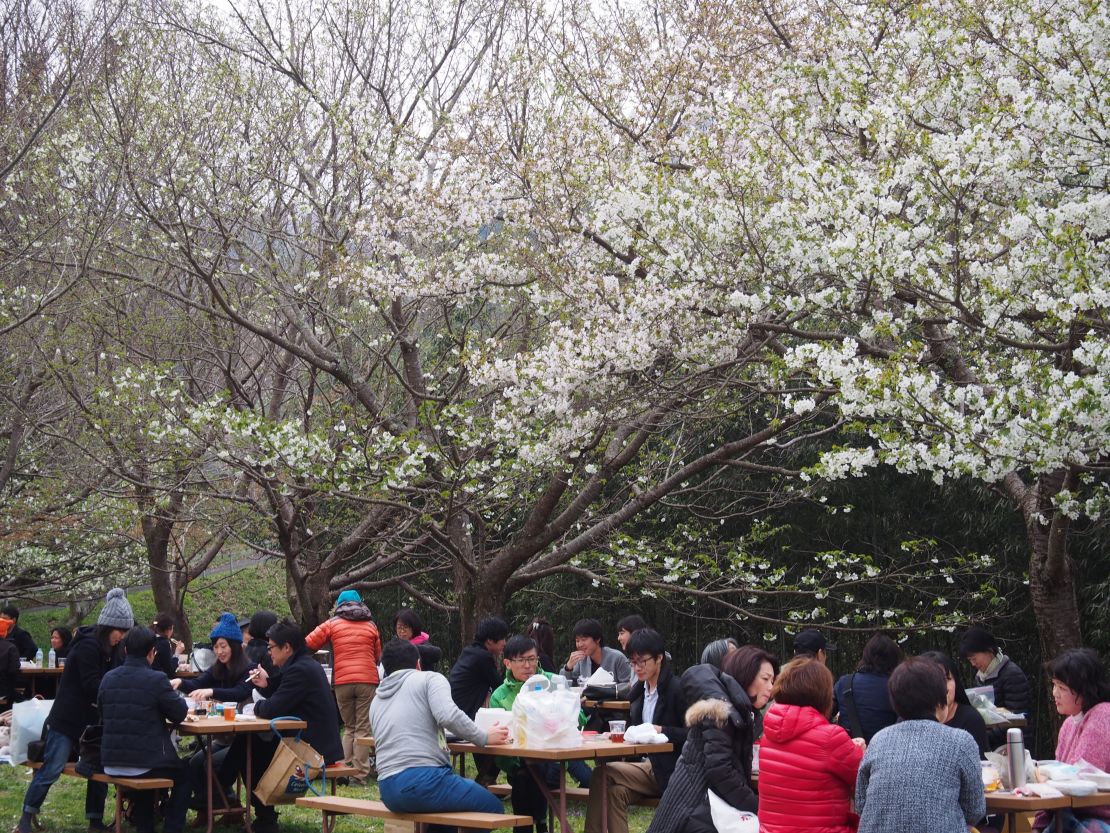
With its shallow coastal waters, dense forests, fertile volcanic soil and towering inland mountains, the Izu Peninsula produces some of Japan’s best surf and turf.
In addition, the peninsula is known for its natural spring water, which often makes its way into locally made sake and craft brews, such as Baird Beer.
It’s really nature at its best here, with meals covering everything from spider crab and squid to sea bream, lobster, mushrooms, katsuobushi (dried bonito flakes) and fresh horseradish.
In many dinner settings, you’ll be invited to grate your own wasabi at the dinner table.
Around the region, a few of the most beloved local restaurants include seafood specialist Suiko, multi-course kaiseki meals at Amagiso, and a home-style kaiseki experience at Toutei beach inn.
Baird Beer, 19-4 Senbonminatocho, Numazu, Shizuoka Prefecture, Japan; +81 55 963 2628
Suiko, 1271-2 Naramoto, Higashiizu, Kamo 413-0302, Shizuoka Prefecture, Japan
Amagiso, 359 Nashimoto, Kawazu, Kamo District, Shizuoka Prefecture 413-0501, Japan; +81 558-35-7711
Toutei, 348-7 Kisami, Shimoda, Shizuoka Prefecture, Japan; 0558-22-3450
Kawagoe, Honshu Island
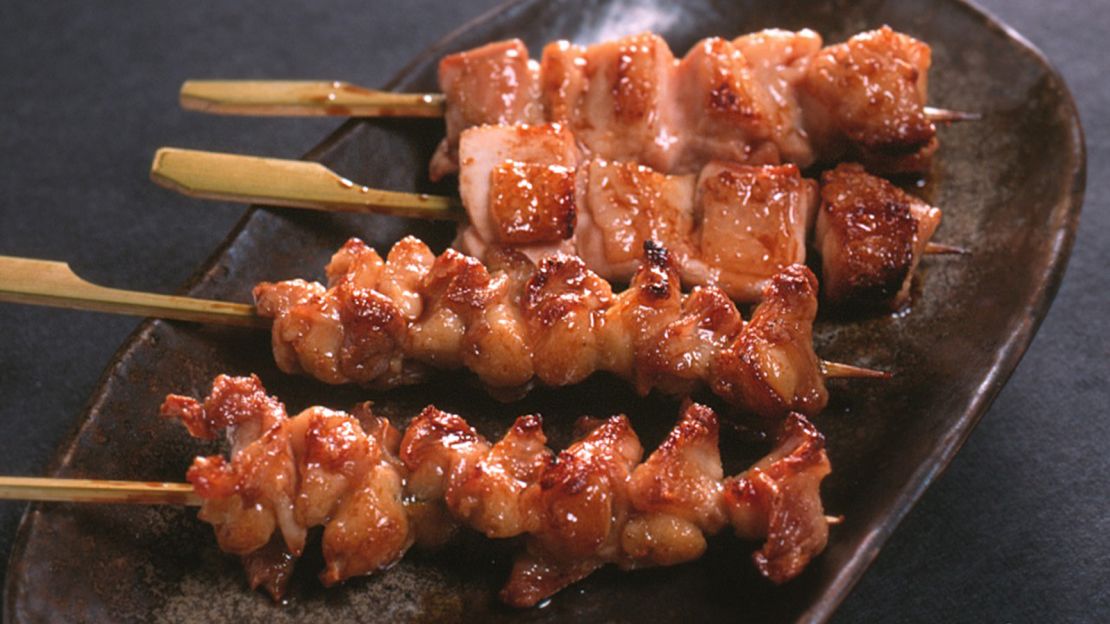
Just 30 minutes northwest of Tokyo, Kawagoe is an easy day trip for those short on time.
The Edo-era castle town will charm you with old-world architecture and temples, but don’t get too distracted. Remember: We’re here for the food.
“Yakitori (grilled chicken skewers) is a dish common throughout Japan, but the best of the best is here,” says Christie.
His favorite spot? Toraya, run by a husband-and-wife team.
“The husband cooks the yakitori over charcoal in front of customers, who sit around him at the counter,” recalls Christie. “Meanwhile, his wife plies everyone with drink and other snacks while engaging everyone in interesting, witty conversation.”
For a local twist to yakitori, Christie recommends adding a red, spicy paste.
After filling up on chicken skewers, travelers can dig into another Kawagoe delicacy: sweet potato.
From imo (sweet potato) beer to ice cream to jelly, the sweet potato has been a fixture here for more than 240 years.
“A bakery called Kameya produces delicious sweet potato soft cakes that just melt in your mouth,” says Christie.
“I’d also recommend Toyodo snack and candy store, where you can try imosenbei – baked, crispy slices of sweet potato.”
Toraya, 20-23 Sugawaramachi, Kawagoe, Saitama Prefecture 350-0046, Japan; +81 49 224 3550
Kameya Honten, Nakacho, Kawagoe 350-0065, Saitama Prefecture, Japan; +81 49 222 2051
Toyodo, Yubinbango, Kawagoe 350-0056, Saitama Prefecture, Matsue-cho 2-6-9; +81 49 222 1852
Takamatsu, Shikoku Island
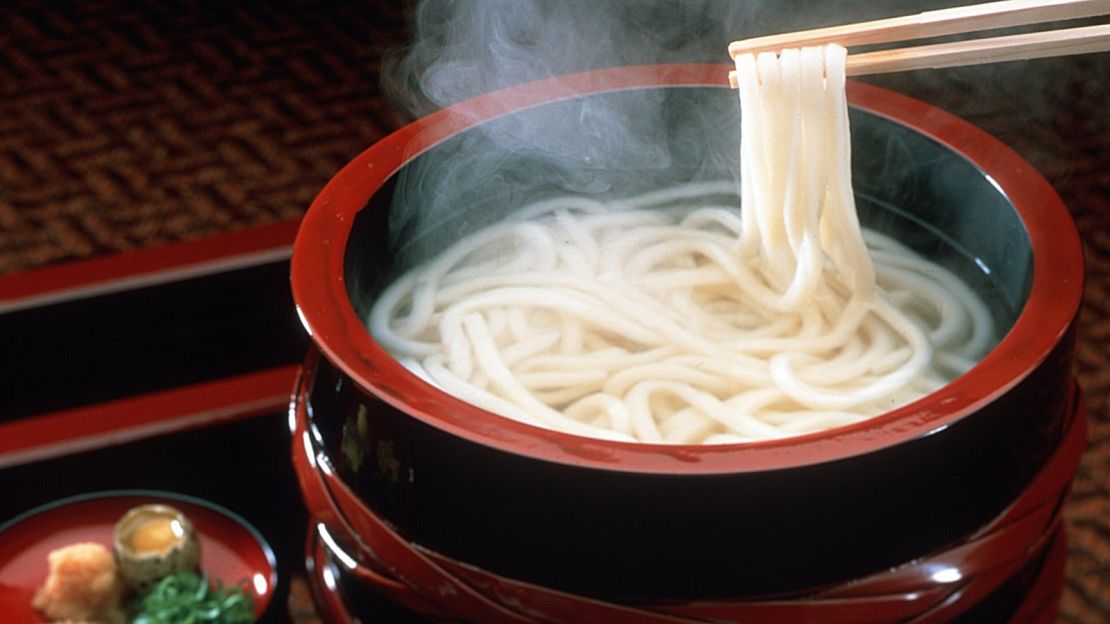
Located on the island of Shikoku, Takamatsu is home to an ancient castle and gorgeous Japanese gardens.
But the main draw, of course, is the city’s famous noodles.
“Sanuki udon noodles are an institution in Takamatsu – eaten morning, noon and night by the locals,” says Christie.
“The canteen-like environments of the family-run sanuki udon restaurants, which the local residents favor, belie the quality of this simple but delicious dish.”
At most diners, Christie says the wheat noodles are served faster than you can slurp them down.
“It probably rates as one of the fastest of fast foods in the world and certainly the most healthy,” says Christie.
There are countless sanuki udon restaurants in town, but Christie has a few favorites including Sakaeda, in central Takamatsu.
“This place has a functional canteen feel with some of the best udon anywhere,” he recalls. “Watching the locals zip through the place on their way to or from school or work is something to behold.”
Come evening, another snack to savor is takoyaki octopus dumplings. Though actually a specialty of Osaka, Christie says Hidamari restaurant is a not-to-miss experience.
“It’s a tiny restaurant hidden away down a side street in the middle of the city. The fact that this restaurant is more like a bar is not surprising as the owner also runs her own late-night establishment after closing,” he says.
“She produces some of the best takoyaki available anywhere in Japan and keeps some of the finest of Japanese beers and sakes to wash it all down.”
Sakaeda, 5-2-23 Bancho, Takamatsu 760-0017, Kagawa Prefecture, Japan; +81 87 834 6291
Hidamari restaurant, 2-18-12 Matsushimacho, Takamatsu, Kagawa Prefecture, Japan; +81 87 897 6002
Yaeyama, Ishigaki and Iriomote, Okinawa Islands
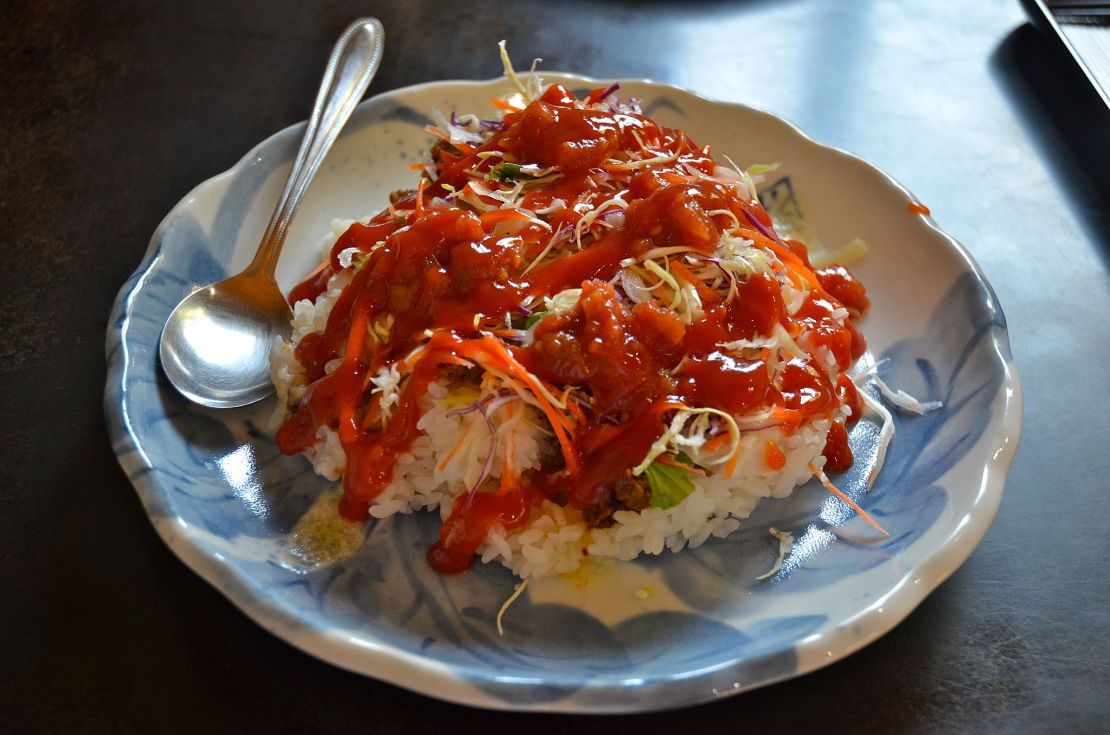
Set aside from the rest of Japan, the southern Okinawa region is known for its unique culture and cuisine.
It’s a world away from the izakaya and ramen noodle spots of Japan’s cosmopolitan cities.
Here, you’re more likely to encounter lots of healthy soups, awamori (local liquor), umi budo (sea grapes), a gazillion variations of goya (a green gourd) and taco rice – thought to be a result of US military presence.
“Okinawa has a different cultural pedigree, which could be described as somewhere between Japan and China, and the cuisine is a very different experience,” says Christie.
Though the subtropical climate and ingredients differ considerably from northern Japan, Okinawa producers still retain the same attention to detail.
“At Hateruma in the Yaeyama district, there are no signature dishes, as the owner-chef only uses fish that he has caught or vegetables grown by himself and only opens for business when he has enough ingredients to prepare dishes for customers,” says Christie.
“His devotion to local Okinawan ingredients is abundantly apparent especially the enthusiasm when he explains each item in dishes he lovingly prepares.”
Christie also suggests Funakura no Sato, where the signature dish is squid ink fried rice.
“This dish, washed down with awamori – the popular but very potent Okinawan spirit – is entertainingly complemented by the wandering minstrels playing lively Okinawan music and song,” says Christie.
Hateruma, 201-101 Haemi, Taketomi-chō, Yaeyama District, Okinawa Prefecture, Japan; +81 980 85 5623
Funakura no Sato, 2468-1 Arakawa, Ishigaki 907-0024, Okinawa Prefecture, Japan; +81 980 82 8108
Kiso Fukushima, Honshu Island
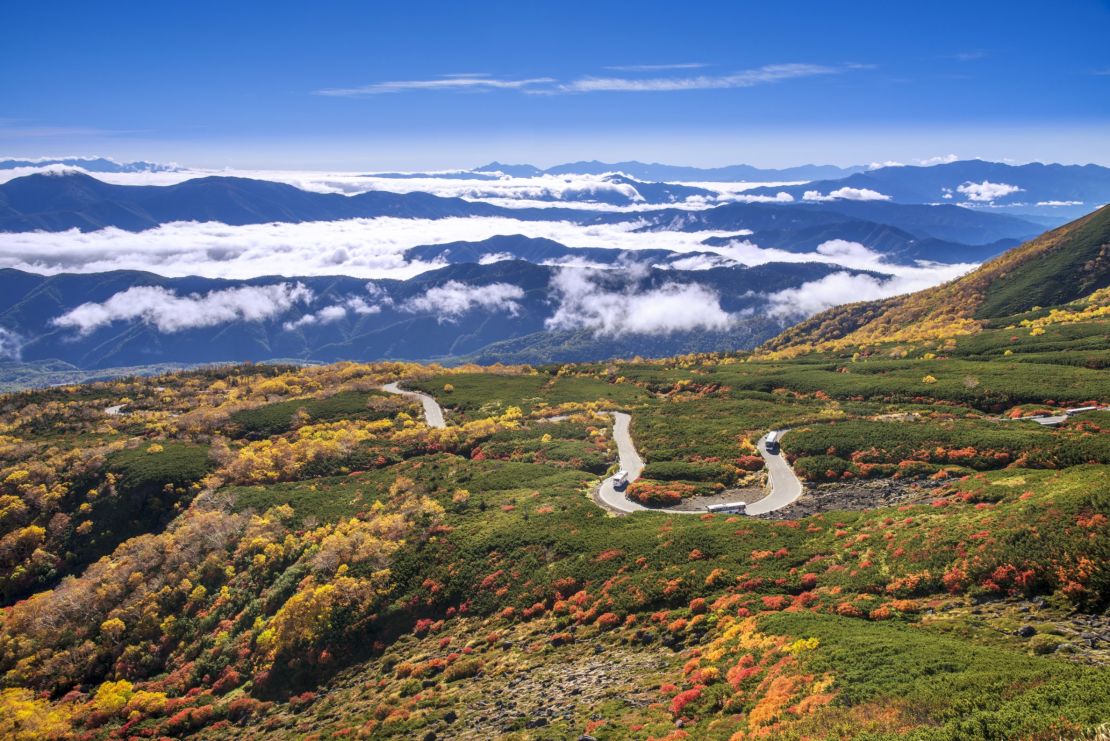
An historic Edo-period post town, Kiso Fukushima now lures travelers for its mountain views, ancient architecture and unique culinary traditions.
“This little town (in the Nagano prefecture) is located deep in the mountains and a long way from the sea. The mountain setting, combined with a harsh winter climate where rice is difficult to grow, results in diet that is noticeably different to much of the rest of Japan,” explains Christie.
“Here, soba buckwheat has historically been the staple, not rice. And, to this day, some of the best, handmade soba noodle dishes can be found here.”
Christie’s favorite variety is nishin soba – a fortifying combination of noodles topped with dried, marinated herring.
“The venerable Kurumaya restaurant is the place to go in central Kiso Fukushima,” recommends Christie. “Or, if you’re visiting the nearby and beautiful Kaida Kogen highland area, head to Matsuba, where the food is just as good and service particularly friendly.”
In addition to soba, other local specialties include prized iwana fish, which typically arrives grilled with a sprinkling of salt. And a warming winter favorite, hoba miso soup – beef and vegetables grilled on the leaf of the hoba tree.
For more adventurous gourmands, raw horse meat – eaten with soy sauce and garlic – is recommended.
Kurumaya, 5367-2 Fukushima, Kiso-machi, Kiso-gun 397-0001, Nagano Prefecture, Japan; +81 264 22 2200
Matsuba, 3904-1 Kaidakogen Suekawa, Kiso-machi, Kiso-gun 397-0301, Nagano Prefecture, Japan; +81 264 42 3100
Aizu Wakamatsu, Honshu Island
With the famous, red-tiled Tsuruga Castle as the primary tourist attraction, Aizu Wakamatsu sits on the banks of the serene Lake Inawashiro, in the shade of Mt. Ono.
Not only is this area home to some of the best sake in Japan, but it’s also known for its dried scallops and earthy ingredients, such as taro, carrots and mushrooms.
“A top local speciality is kozuyu, which always includes a broth made from dried scallops, shiitake mushrooms, carrots, taro and konnyaku devil’s tongue jelly (made from a starchy tuber), seasoned with soy sauce and Mirin sweet cooking sake,” says Christie.
“Each family and restaurant adapts this basic recipe to create its own version.”
Across the area, other intriguing dishes offer local takes on more familiar Japanese staples.
“There’s milk-miso ramen noodles, which have a smoother and more refreshing taste than ramen found elsewhere in Japan,” says Christie. “You also have to try shakugan soba, buckwheat noodles with a raw leek onion incongruously plonked into it. Regardless of how it looks, the leek’s pungent flavor goes remarkably well with the subtleness of the soba.”
At local eateries such as Taihei-Raku, travelers will find a lively environment and a variety of foods to sample.
“The master will happily join in ensure everyone’s topped up with his finest sake,” says Christie.
Taihei-Raku, 3-3 Hinoki-Machi, Aizuwakamatsu, Fukushima Prefecture, Japan; +81 242 29 6385

















